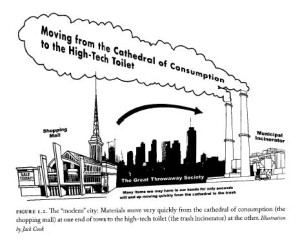“Air Monitoring” touches on many localities and many issues. Whether the concern is high asthma rates in North Minneapolis due to dirty air, or disease-causing silica dust from “frac” sand mining, or “regional haze” limiting views in the Boundary Waters Canoe Area, or coal and “biomass” burner emissions sickening and killing millions of people worldwide, or toxic fumes in a basement because a contaminated site was never really cleaned up, measuring the actual composition of our air is a key step in the chain of events that need to happen to improve it.
Monitoring in a broad sense can be aimed at measuring the overall state of the air (“ambient” monitoring), the impacts of a particular facility (“fenceline” monitoring), what is coming out of a particular smokestack (“continuous emission monitoring” or “performance testing”), the air quality in your home or workplace (radon testing, for example), or wearing a personal air monitor for a day to determine individual exposure. It might be a “bucket brigade” monitoring program organized by a community organization. It might be other things.
People tend to assume that if they are concerned about bad air, monitoring will confirm the problem. This may or may not prove to be the case. Often it does not, because “the devil is in the details” and the details of air monitoring are very complex and not easy to understand.
Based on incomplete information provided by the Pollution Control Agency (MPCA), it appears that about 64 cents per person per year is being spent on air monitoring in Minnesota. (Half or more of the money is federal in the form of grants from EPA,) Are we getting what we need from that expenditure?
The MPCA has estimated that human-caused (“Anthropogenic”) PM-2.5 (fine particle) air pollution is killing 3800 Minnesotans per year, sending 940 to the hospital, sending 770 to emergency rooms, causing 260,000 lost work days, causing 1600 non-fatal heart attacks, and so on. The same report estimates that ozone pollution is killing another 61 Minnesotans per year, sending 440 to the hospital, causing 140,000 missed school days, and so on. The MPCA estimates the cost of all this death and disease at about $35 billion. Of course, there are many other types of air pollution also causing harm, and the estimates must be considered very approximate. (The MPCA seems to value a human life lost at about $900,000. How much do you think yours is worth?) In any case, these numbers suggest that the annual cost per living Minnesotan is about $6290 per year, about ten thousand times the amount being spent on monitoring the quality of our air.
Most air monitoring in Minnesota is done by, or with the advice of, the Minnesota Pollution Control Agency (MPCA), and is a fairly narrow subset of the whole world of monitoring. As required by the US Environmental Protection Agency, a 30 day public comment period was held during June. At the request of people, the comment period was extended to Aug 1, 2014. But, the PCA says it will accept comments at any time.
See Action Alert: Ask for public comment extension on Minnesota air monitoring plan. In this I tried to point out some of the concerns and issues around monitoring.
In response to Data Practices act requests, the MPCA provided information on grants and budgets. Some examples:
“Near Roadway NO2 Monitoring Site Establishment Grant” (USEPA, $200,000)
“Particulate Matter (PM 2.5) Air Monitoring Network Cooperative Agreement” (USEPA, $1,324,694)
This is from an alert I received this morning [Let me know if you want the whole thing in order to act on it.]
” … Tell the Winona Mayor and City Council members to require air monitoring at all frack sand mines, processing, and transportation facilities in the city of Winona. They may consider the monitoring at their meeting 6:30 pm on Monday, August 4.”
“I believe that without monitors at the fence lines of each facility, residents and visitors have no idea whether they are at risk from the crystalline silica dust these facilities produce.”
The [Citizens Environmental Quality Committee (CEQC)] has 3 times made their recommendations to the City’s Planning Commission. Each time they have been rejected as unnecessary and too costly for the operators of these facilities. The CEQC now wants the Mayor and City Council to consider their recommendations directly.
Many people in North Minneapolis have expressed concern about the movement or shutdown of an air monitor.
Many people were concerned when they found out there was NO ozone monitor in Minneapolis or St. Paul.
People are concerned that pollutant “spikes” as reflected in real-time data but are not recorded.
Some thoughts from Muller:
Minnesota needs to take a broad look at air monitoring to ensure that real needs are being met and that adequate funding is available.
These real needs include, for example, helping people who are being sickened or stunk out of their homes by neighbors’ wood stoves or backyard boilers. This might involve personal exposure monitoring. The MPCA and MDH should be prepared to respond in a substantial and meaningful way.
The MPCA and the Minnesota Department of Health need to be more proactive in regard to air monitoring in Environmental Justice communities. Consultation with EJ communities is needed to work out the details.
Monitoring is not being recorded in small enough time intervals to detect “spikes” of pollutants that may cause health effects. Even one-hour intervals are probably not small enough. Not enough monitoring data is available in real time on the Internet.
There are two non-routine air monitoring projects related to North Minneapolis, the “Community” project and the “ North Minneapolis” project instigated by the Northern Metals permitting controversy. These may be very distinct internally to the MPCA but are likely to be less so to community members. The results of these two efforts should be integrated to the extent possible.
The “detailed results” of the “North Minneapolis” project contain more detail on wind directions & etc. It would be desirable to present this information in the same level of detail for the “Community” project.
In general, air monitoring tends to focus on compliance, and to a lesser extent research and enforcement. More direct emphasis on health protection is needed.
A major concern is the focus on presenting 24 hour data as if the point was to establish, or imply, compliance with the 24-hour PM-2.5 standard of 35 micrograms per cubic meter. It is repeatedly stated that the 24 hour averages of measured concentrations are below the National Ambient Air Quality Standards (NAAQS). This seems intended to imply that air quality problems aren’t present, at least for PM-2.5
Looking at the raw (but QCd) data for the North Minneapolis (31st Ave N. & N. Pacific Street) monitor from Jan 1, 2013 to March 31, 2014, it appears that there were 115 hourly intervals during which PM-2.5 concentrations were above 35. For 31 hours they were above 50. For five hours they were above 70. The peak value was 126, at 6:00 PM on May 14, 2013. For 370 hour intervals no results were recorded because the equipment was not working properly.
It is well-demonstrated in the literature that air pollutant levels below the National Ambient Air Quality Standards produce health effects. There may be a “Linear No Threshold” relationship. It is well known that the setting of air quality standards are influenced by political considerations (influence of big polluters, Chamber of Commerce ….) and the setting of standards lags behind what the scientific literature has to say, sometimes by many years. Health data–asthma, etc–for neighborhoods in Minneapolis strongly suggest that air quality is impacting human health. The PCA itself, in a presentation to a legislative committee, has estimated widespread health effects as noted above.
Minnesota is hone of the highest radon level states because uranium is widely distributed in the states complex geology. The EPA “action level” of 4 picucuries per liter corresponds to an estimated lung cancer death rate of one in seven thousand, a much higher risk level than typically considered acceptable. (The World Health Organization recommended level is 2.7.) An EPA presentation estimated that 564 Minnesotan’s per year die of radon-related lung cancer. Radon deaths can be prevented, or greatly reduced, by testing homes for radon and installing “mitigation” systems to suck out the radioactive gas. The cost per life saved has been estimated at $190,000. The cost of treating a case of lung cancer has been estimated at one million dollars. As noted above, the MPCA estimated the value of a human life lost to air pollution as about $900,000. These facts make clear that it would be highly cost-effective for Minnesota to ensure that every home in the state is tested for radon and mitigated if radon levels above 2.7 are found.
(Radon is the “turf” of the Minnesota Department of Health and not the Pollution Control Agency, and is outside the formal scope of the “network plan” the PCA seeks comment on–although, at the federal level, radon seems to be the turf of the EPA.)
A quick review of the “2012 Criteria Point Emissions Ranking Report” indicates that many of the grossest belchers are part of or connected to mining. (Including Minnesota Power as the primary supplier of electric power to mining facilities.) For example 7 of the top 10 NOx emitters, 8 of the top 10 Particulate Matter emitters, 5 of the top 10 sulfur dioxide emitters, and 3 of the top 10 lead emitters are mining-connected. This strongly suggests that instead of an ongoing “free ride,” mining and mining-related facilities should be targeted for monitoring and permit tightening.
Minnesota needs to be more pro-active in setting state-level standards below national standards when “the science” and local needs support doing so.
Conclusion:
The monitoring plan on which the MPCA has sought comments is very complex, but in reality describes only a part of the air quality monitoring Minnesota really needs as part of a serious effort to improve air quality and public health.
Tell the MPCA what YOU think: rick.strassman@state.mn.us .
Alan Muller



